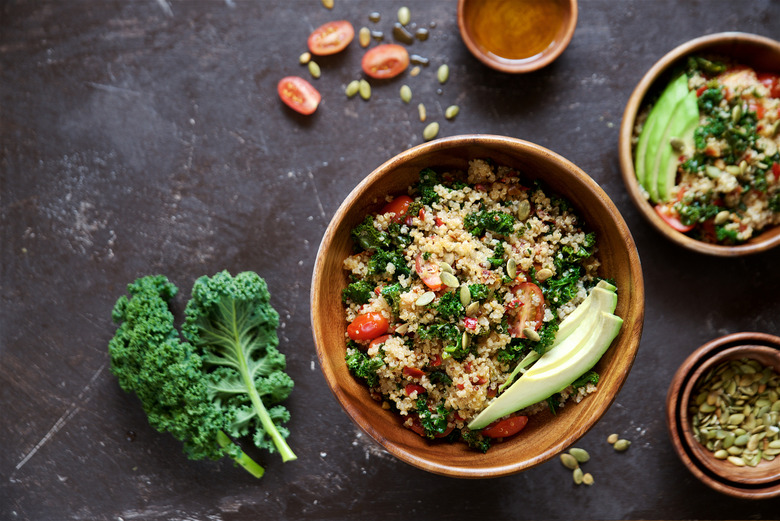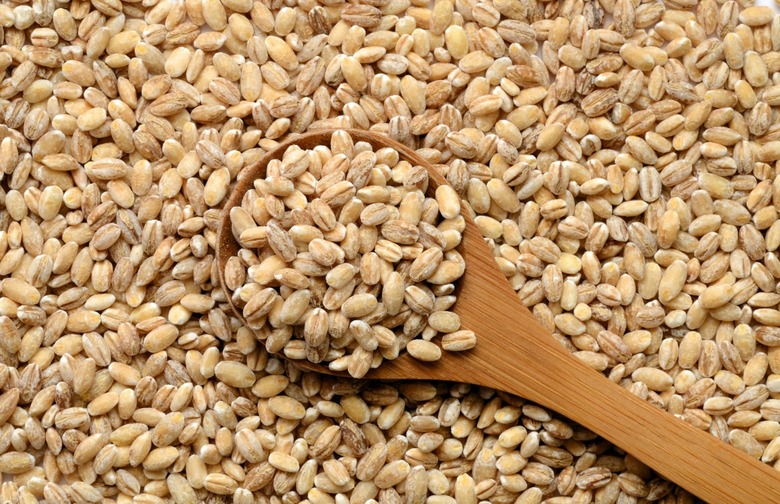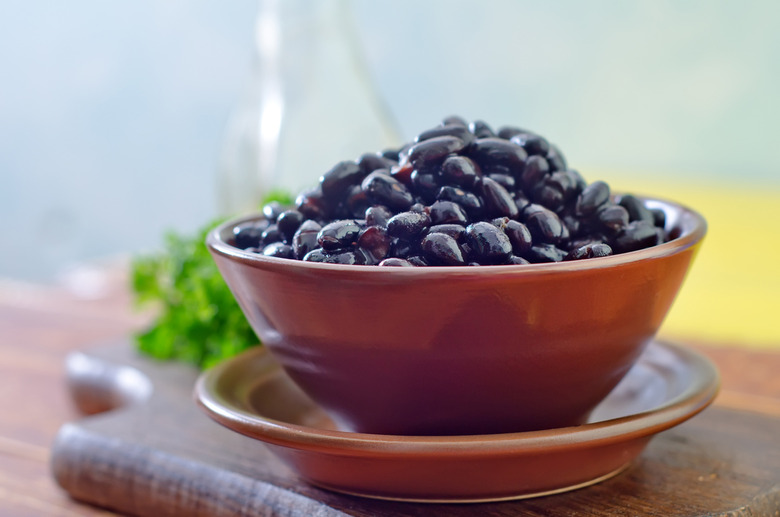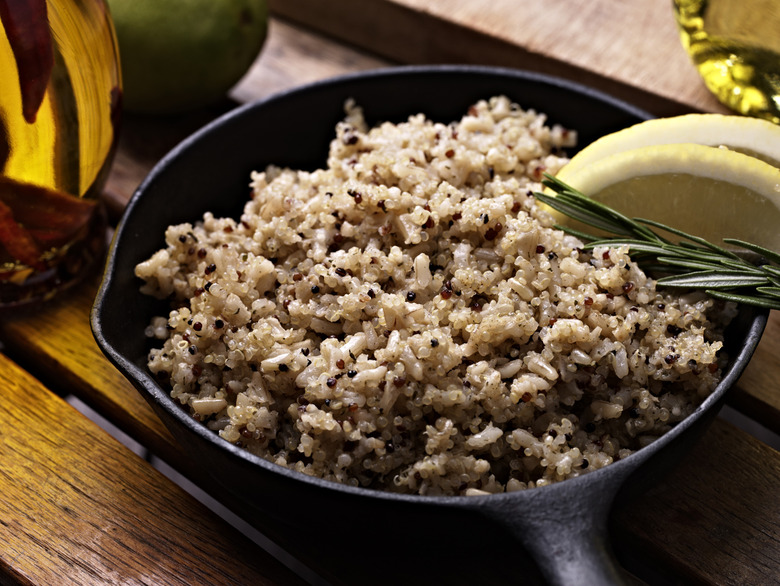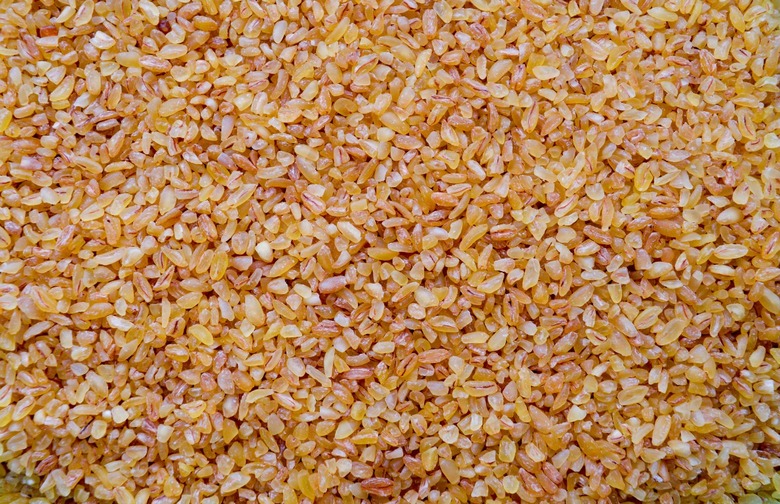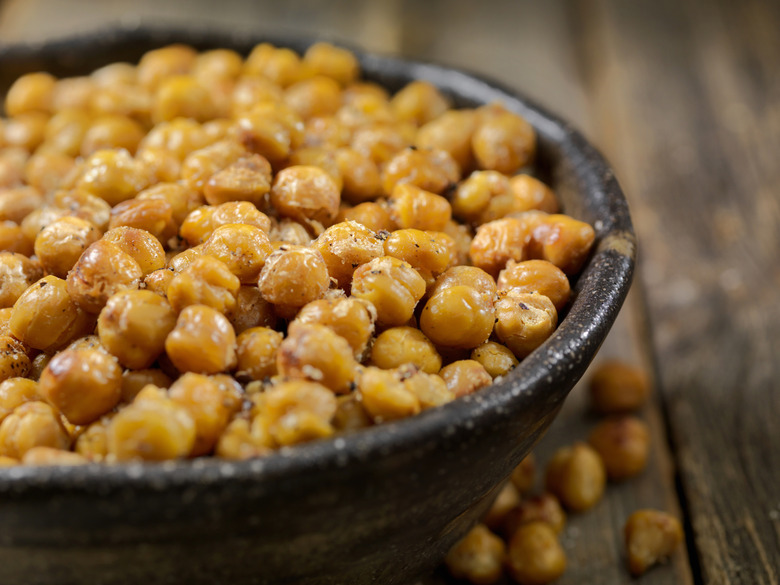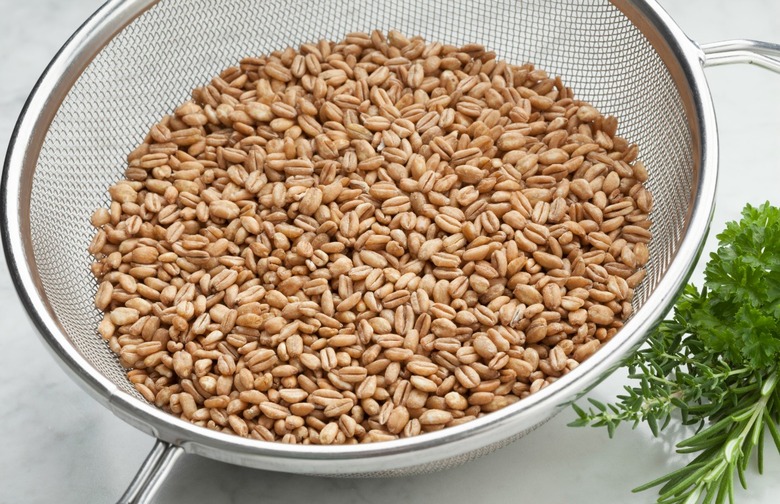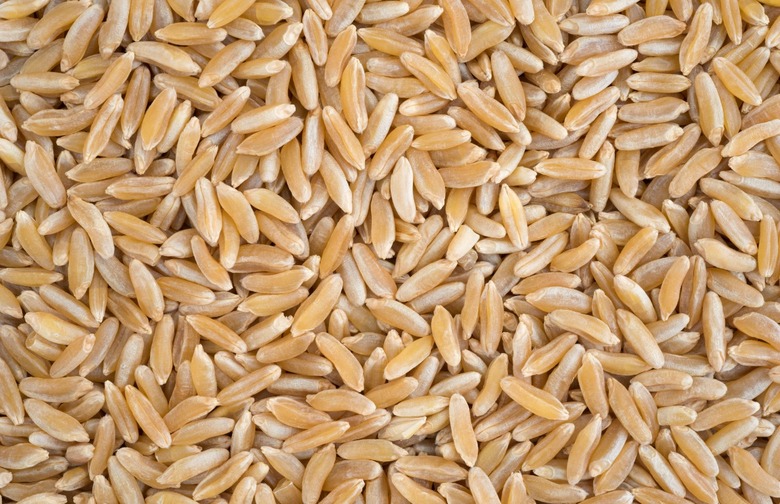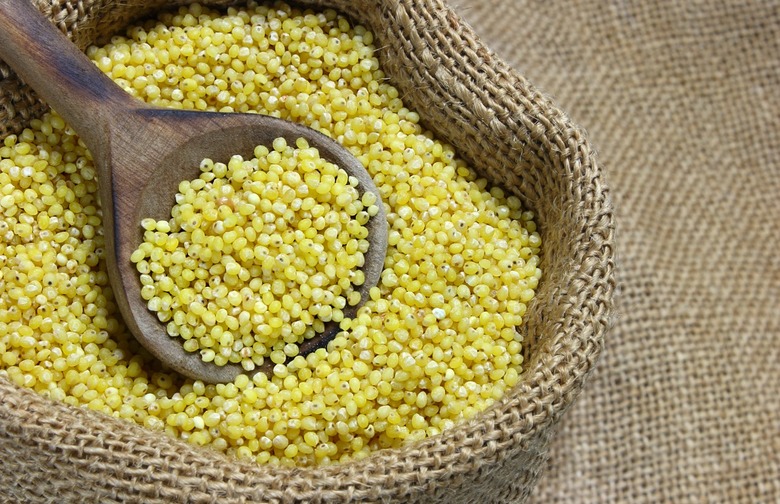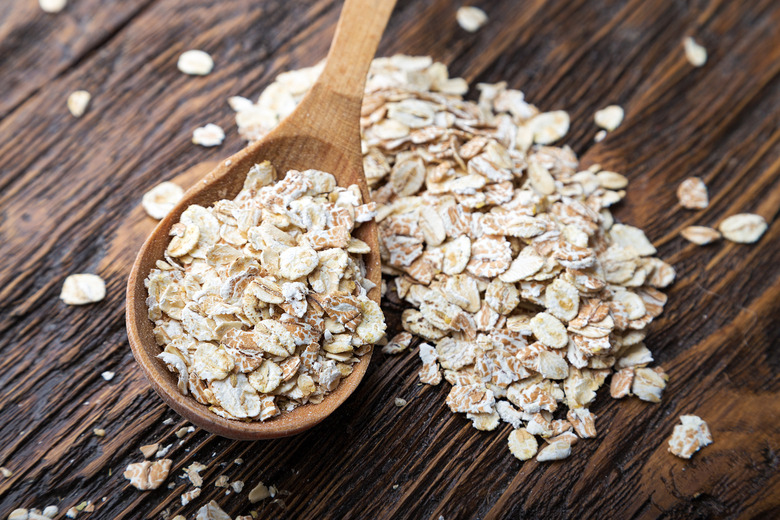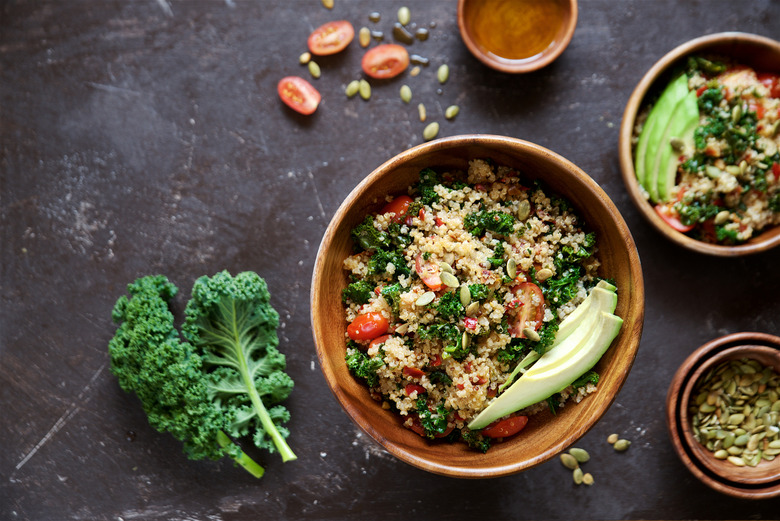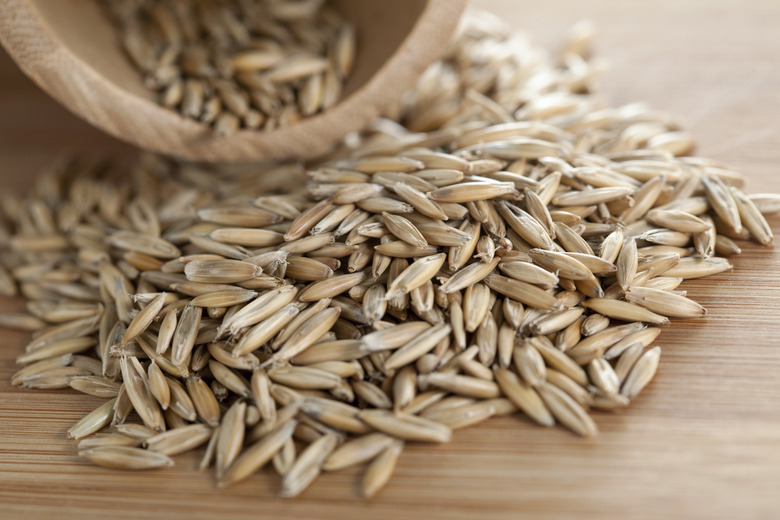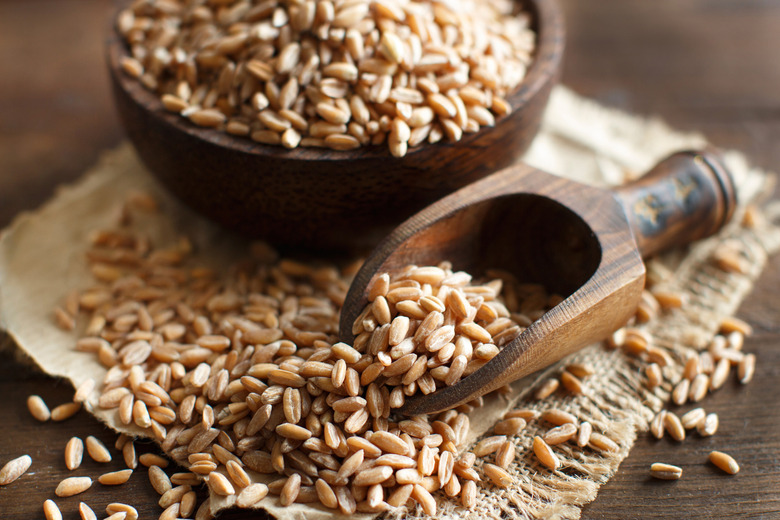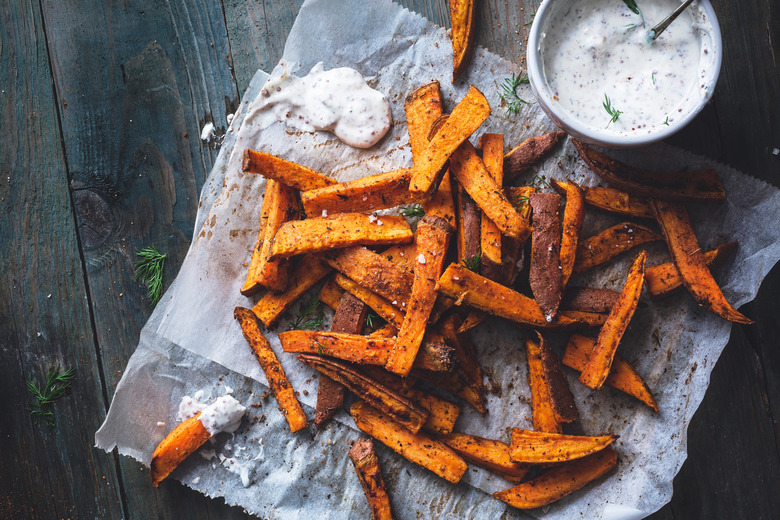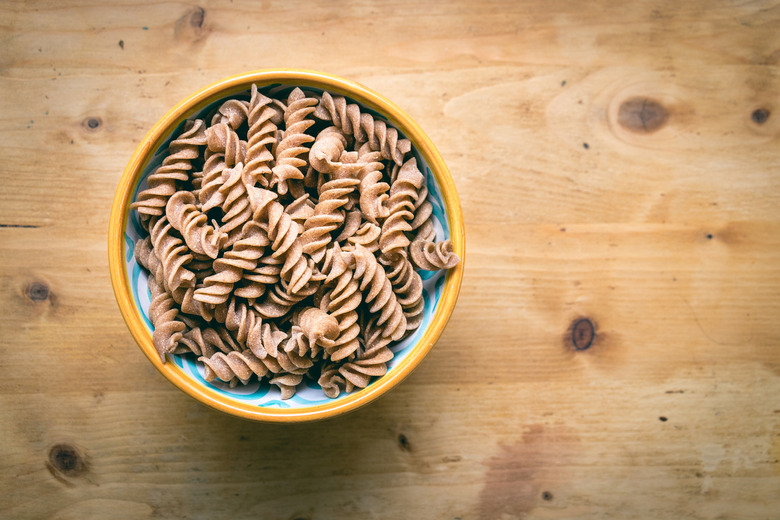14 Complex Carbs To Help Shape Your Best Summer Body Yet Slideshow
You'll usually be able to spot the difference between complex and simple carbs as readily as you can identify whether something is from the earth or from a factory. Simple carbs will look like a human played some part in their creation. More often than not, a simple carb placed next to its complex cousin will look lackluster (e.g. white bread next to Ezekiel bread). A lot of complex carbohydrates can be found in the produce section, unbound by human packaging.
Regardless of where they're found in the grocery store, deciding to eat any of the following complex carbohydrates can help you get and stay in shape.
Click ahead for 14 Complex Carbs to Help Shape Your Best Summer Body Yet.
Barley
It's high in fiber, molybdenum, selenium, and manganese; you won't find a much more nutritious complex carb than barley. Barley is most readily incorporated into soups, but you can also smoke it with wood chips and serve it with lamb or make risotto with it. A 100-gram serving of pearl barley has nearly four grams of fiber and just over 120 calories — making it a viable carbohydrate for weight-loss and overall health.
Black Beans
It's the International Year of Pulses, so we suggest celebrating by eating some protein- and fiber-rich black beans. They work great as salad ingredients or the core of a bowl-based meal. While eating 100 grams of black beans would provide you with an astounding 16 grams of fiber (and 340 or so calories), we feel that the eight grams of fiber (and 170 calories) in a 50-gram serving may be much easier to stomach.
Brown Rice
Brown rice is one of the complex carbohydrate basics. Per 100 grams, there are about two grams of health-promoting fiber and just over 110 calories in brown rice. It's simple to prepare and quite versatile, so be sure to stock brown rice in your pantry for an easy, beach body-friendly food source.
Bulgur
If you're looking for a nutrient-packed whole-grain source of energy in the morning, this Bulgur With Pistachios and Raisins recipe is for you. Utilizing bulgur, a quickly cooking, versatile form of wheat that's often prepared like oats, the recipe is packed with complex carbs, healthy fats, and some great plant-based protein. With nearly no sugar, four and a half grams of fiber, and just over 80 calories per 100 grams, bulgur is a smart, simple way to fuel your body in preparation for warmer weather.
Chickpeas
Also called garbanzo beans, chickpeas are protein-rich legumes that are rich in B vitamins as well as iron and phosphorous. You can easily turn chickpeas into hummus, which can be used on salads, as a dip, or on sandwiches. Using 100 grams of chickpeas in your hummus recipe will give you somewhere around 17 grams of dietary fiber and nearly twenty grams of precious plant-based protein. Be careful, though: 100 grams of chickpeas will also add up to 365 calories.
Farro
Ancient, alternative grains are great ways to add some substance and nutrition to your beach body diet. Hearty, mild, chewy, and nutty, farro can be used in the same ways that you use quinoa or rice. Choosing to mix 100 grams of farro into your meal plan will provide you with an almost unbelievable 12 grams of dietary fiber and 12 grams of protein. A serving of this size has about 340 calories, though, rendering a 50 gram serving much more realistic.
Kamut
We've gotten away from many ancient forms of wheat, such as kamut, and the result is that our bodies are becoming fatter and unhealthier than ever. In a study that had some participants eating modern wheat while others ate kamut, it was shown that the kamut-eating participants underwent a much greater reduction in both total cholesterol and LDL (the "bad" stuff) than modern-wheat-eaters. Those who ate kamut also experienced a decrease in inflammatory markers. Per 100 grams, you'll get somewhere between four and five grams of fiber at just 130 calories from this delicious, nutritious form of wheat.
Millet
Magnesium-packed millet won't only help you get beach-ready, it will also help keep your heart running healthily. You can prepare it to be creamy like mashed potatoes or fluffy like rice and, because of its ancient-grain status, you'll sound quite trendy when you tell your coworker that your Tupperware is filled with millet and kale. Adding 100 grams of millet into your daily meal plan will add about eight and a half grams of fiber, but be aware that this is a calorie-dense grain (nearly 380 calories per 100 grams).
Oats
There's a reason that rolled or old-fashioned oats have been a staple of bodybuilder and athlete diets across the globe for decades: They're affordable, easy to prepare, and can be consumed in a variety of ways. Fiber is king, and in 100 grams of old-fashioned oats you'd get a whopping 11 grams of it. We suggest lowering the calories and having a 50 gram serving of oats for a healthy 150-ish calories and five or six grams of fiber.
Quinoa
While we often prepare quinoa in the same fashion that we cook grains, this complex carbohydrate is actually the seed of a plant related to beets, spinach, and chard. Eating 100 grams of this gluten-free carb will provide your body with three grams of fiber and a mere 120 calories. It also contains all of the essential amino acids, rendering it a complete protein source that works great for those following a vegan lifestyle.
Rye
Choosing a rye-based bread over white bread is an easy switch to make to incorporate more complex carbs into your beach body diet. Rye is darker and denser than white bread, so you may find that you need to get used to its stronger, slightly sour flavor. We assure that it's worth it though: Rye bread, at nearly six grams of fiber per 100 grams (and 260 calories), causes a lower rise in blood sugar levels than its white counterpart.
Spelt
Another ancient grain, spelt, is undergoing its own healthy eating renaissance. Spelt is quite similar to wheat, but it has a bit more zinc and gluten-based protein. Per 100 grams, some spelt varieties have an unbelievable 11 grams of dietary fiber and a relatedly unbelievable 340 calories. Look for spelt (hopefully a little less than 100 grams of it if you're worried about calories) in ancient grain cereals, breads, and pastas.
Sweet Potatoes
Whether you're boiling them, mashing them, or sticking them in a stew, sweet potatoes can be enjoyed in a variety of ways. Our favorite method is simply to bake them, enjoying their three grams of dietary fiber and four grams of natural sugar (per 100 grams of sweet potato) with a dash of cinnamon (which can help regulate your blood sugar levels). If you do eat 100 grams of sweet potato, you'll only be consuming 86 calories.
Whole Grains
Whole grain foods (e.g. whole grain pasta) contain all of their original bran, germ, and endosperm. Whole grains can be found in breads, crackers, and cereals, but be sure to read the nutrition label before purchasing in order to make sure there's no undesirable added sugar. By choosing a whole grain variety, you can still enjoy your favorite pasta- or bread-based dishes while fueling your weight-loss fire.
